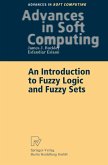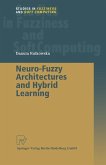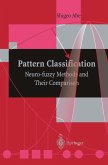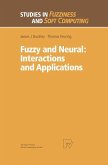-Provides a framework for unification, construction and development of neuro-fuzzy systems; -Presents complete algorithms in a systematic and structured fashion, facilitating understanding and implementation, -Covers not only advanced topics but also fundamentals of fuzzy sets, -Includes problems and exercises following each chapter, -Illustrates the results on a wide variety of simulations, -Provides tools for possible applications in business and economics, medicine and bioengineering, automatic control, robotics and civil engineering.
Dieser Download kann aus rechtlichen Gründen nur mit Rechnungsadresse in A, B, BG, CY, CZ, D, DK, EW, E, FIN, F, GR, HR, H, IRL, I, LT, L, LR, M, NL, PL, P, R, S, SLO, SK ausgeliefert werden.
"This research monograph offers a very detailed insight into ... flexible neurofuzzy architectures. ... The author systematically guides the reader through the essence of the neurofuzzy systems. ... Careful attention to details along with well-organized and systematic derivations of all learning formulas are the important features of the book. The wealth of experimental material and thorough comparative analysis is another strength of the book. The list of references is very much updated ... . Overall, the book is worth studying." (Witold Pedrycz, Zentralblatt MATH, Vol. 1080, 2006)
"It is fair to say that the work presented in this book moves the whole area of modeling by neuro-fuzzy systems to a higher level. ... a great resource for researchers in this area, who have a fairly strong background in both fuzzy systems and artificial neural networks. It is also an excellent textbook for advanced graduate students in engineering, systems science, computer science, information science, and perhaps some other areas, who are interested in neuro-fuzzy systems and, more generally, in applications of fuzzy mathematics." (George J. Klir, International Journal of General Systems, Vol. 34 (3), 2005)









